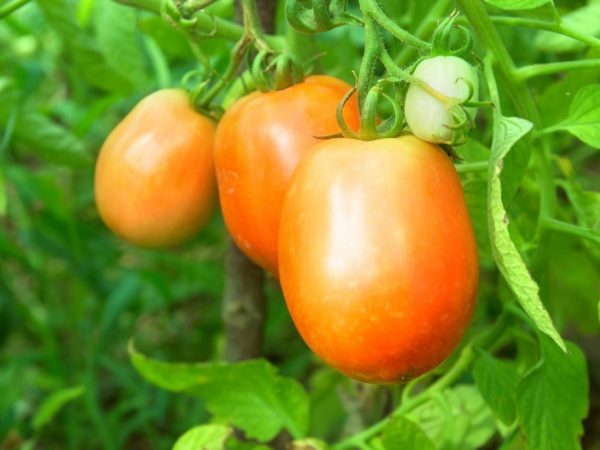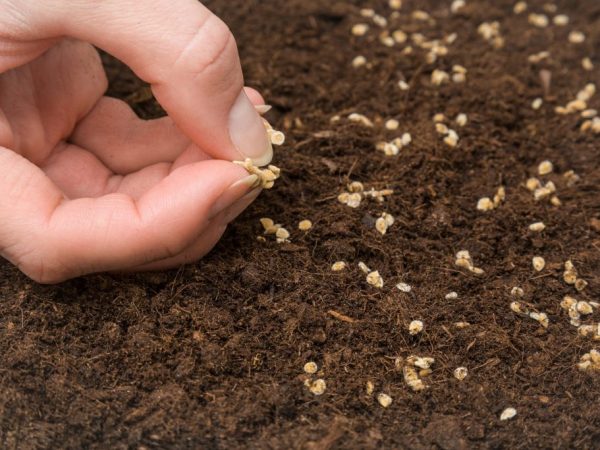Description of the Orange Giant tomato
Have you decided to plant a new tomato variety in your garden? Pay attention to the orange giant tomato. Bright, sunny and very appetizing fruits will surely please your whole family. They will not only surprise you with their size, but will also be a great addition to the festive table, delight you with their taste.

Description of the Orange Giant tomato
Characteristics of the variety
This type of tomato was bred by Russian breeders in the early 2000s. It successfully received state registration and was recommended for growing, both in the open field and in greenhouse conditions. The variety is popular with summer residents due to its unusual appearance, high yield and simple maintenance methods.
Description of the plant
Orange Giant tomatoes belong to the indeterminate, that is, a tall plant species and a mid-season tomato variety. Tomato branches grow up to 140 cm in height.
More than a hundred days pass from the moment the seeds are sown to the harvest. Fruits ripen within 3 months - from July to September.
Description of the fetus
The variety got its name due to the unusual color and size of the fruit. These tomatoes are characterized by an oblong and elongated shape. The weight of one root crop, on average, reaches 250 g. Often there are also giant fruits weighing 450 g, but they can be grown only in a warm southern climate. Despite their large size, tomatoes are not prone to cracking and rarely remain unripe. From one bush of a plant, you can collect from 5 to 6 kg of fruits. And from 1 m2, on which no more than 3 bushes are placed, up to 15 kg of vegetables.
These tomatoes taste good, but due to their size, unfortunately, they are not suitable for preservation as a whole. Noting their juiciness and aroma, housewives are happy to use tomatoes as the main ingredient for preparing various salads (including canned ones), sauces, pastes and juice. You can also use them for pickling in barrels - salted tomatoes will be a great addition to any festive table.
Dignity
Giving a description of this variety, vegetable growers note a number of indisputable advantages that distinguish it from other types of tomatoes:
- good yield;
- beautiful shape and color of the fruit;
- large size of tomatoes;
- immunity to low temperatures;
- the plant does not need additional watering;
- resistance to various types of diseases;
- attractive presentation.
The main advantage of tomatoes belonging to the orange Giant variety, for an ordinary summer resident, is that they can be grown not only in the garden, but also in greenhouses, while the plant will bear fruit perfectly.
disadvantages
Unfortunately, this variety also has disadvantages, as evidenced by the characteristics of the breeders. These primarily include the following points:
- very fragile bush branches that are easy to break;
- the need for constant feeding during the growing season.
Growing tips

Seeds should be prepared for planting
Growing an Orange Giant is easy enough. It is important to properly cultivate the soil and prepare the seeds for sowing. Stick to simple rules and then you will be guaranteed a great harvest.
- To ensure good germination of seeds, it is necessary to process them. Prepare a not very steep solution of manganese, and soak the material selected for germination in it. After 10-15 minutes, the seeds should be taken out and rinsed thoroughly under running water.
- Keep in mind that it is best to use soil purchased from specialty stores for planting. Pour the soil into the container in which you plan to grow seedlings in advance. Pour water over it and cover with plastic wrap overnight. Thanks to this simple procedure, the soil will retain its moisture until the seeds are planted.
- The most suitable time for this procedure is March-April.
- After planting the seeds, they must be covered with foil and left alone for several days. Don't worry, the soil will stay moist during this time, so you don't need to water your seeds.
- After the sprouts have more than 3 leaves, they must be seated in separate containers. Do not forget that during this period tomatoes actively need to be fed with minerals. Therefore, be sure to feed the sprouts.
Tomato care
When choosing a place in the garden for tomatoes, keep in mind that the area where carrots, onions, cabbage and legumes were previously grown are best suited for these purposes. The best time for planting seedlings under the film is May, in open soil - early June. In order to prevent plants from interfering with each other in the future, observe a certain pattern of their location - 50 by 60 cm. Do not plant more than 3 plants on 1 m2 of land.
Take the time to form the bushes into one stem and tie them up. This should be done in the first half of summer, when the plant's stepsons are most actively formed. Otherwise, caring for the orange Giant is no different from caring for any other vegetable crops.
Keep a close eye on the cleanliness of the garden bed and get rid of weeds in time. In addition, this variety of tomatoes loves when the soil is constantly loosened. Use fertilizers actively to feed the plant. This must be done at least three times throughout the season. If you decide to grow vegetables in a greenhouse, remember to maintain moderate humidity in the greenhouse - this is important, otherwise the fruits may start to rot.
Plant disease resistance
Orange variety Giant is resistant to various diseases that often affect vegetable crops. However, due to violation of the basic rules of cultivation (non-observance of the humidity regime, excessive watering, drafts), tomatoes can be exposed to various microorganisms that can cause diseases in them.
The most common disease affecting tomatoes is late blight. This is a fungal disease that affects the entire plant. First, the fungus infects the leaves, then the stems and fruits. Dark spots appear on the tomato - necrosis, which begin to rot, which makes the tomatoes unusable. If you do not start to fight the disease in time, the fungus can destroy most of the crop.
At the very first symptoms of the disease - blackening and dying off of the leaves, it is necessary to treat the bush with fungicidal preparations: Fitosporin-M, Fundazol, Quadris, Bravo. In addition, for this you can use a solution of ordinary table salt (at the rate of 10 g per 1 liter of water).
Prophylaxis
It is equally important to observe a number of preventive measures. Tomatoes should not be planted next to potatoes, as they are often the source of this disease.Plants should be watered gently at the root, never soaking the leaves. After harvesting, it is necessary to dig the soil very deeply.
Remember, tomatoes always signal a deterioration in their health. If you react in time, you can avoid the development of the disease in tomatoes, and they will certainly delight you with their harvest. It should also not be forgotten that infection is not always the cause of the appearance of spots on leaves and roots. Sometimes this is a sign that the vegetable is suffering from an overabundance of minerals.
Variety reviews
In their positive reviews and descriptions of the orange Giant tomato, novice gardeners, as well as farmers-producers, note, first of all, its high yield, unpretentiousness in cultivation and the excellent taste of the fruit.
These tomatoes are ideal for preparing light summer salads - the full description testifies to this. They can also be successfully used as the main ingredient for various homemade preparations. In addition, the vegetable tolerates transportation well and is in great demand among consumers.


